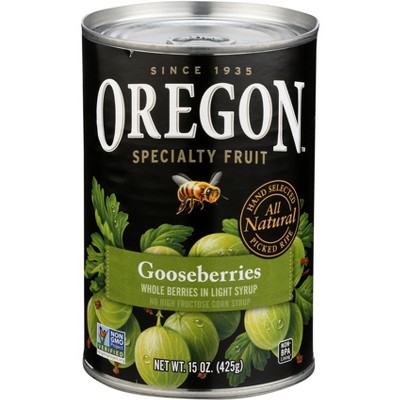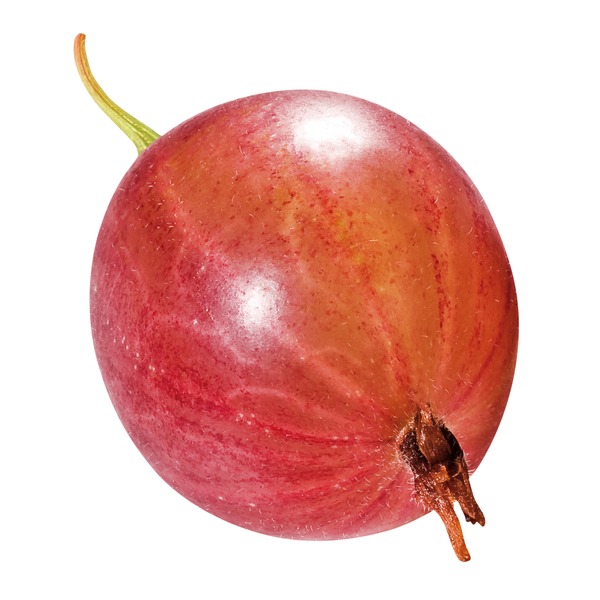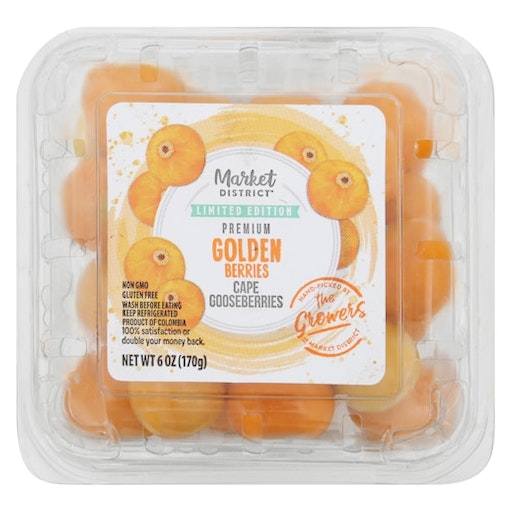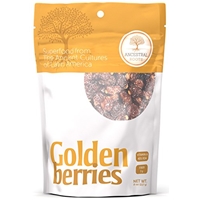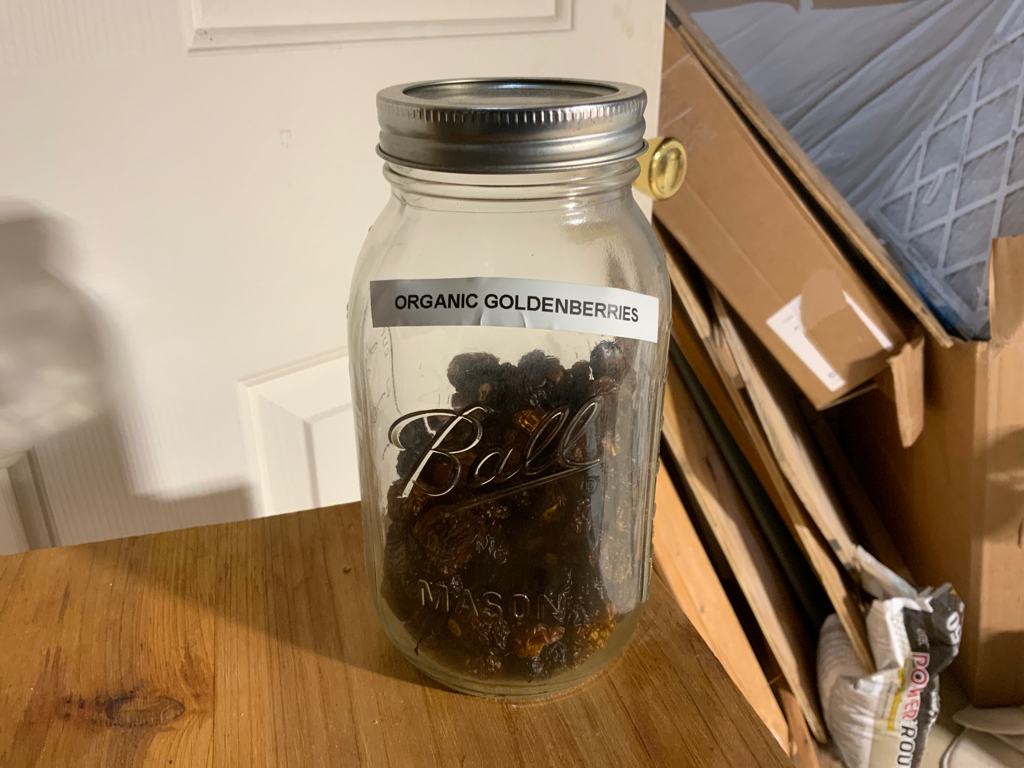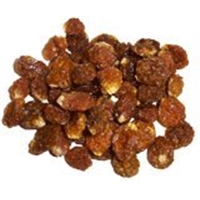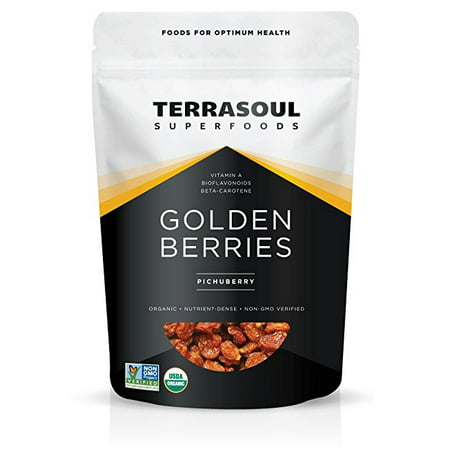DESSERTS
SNACKS
SALADS
Gooseberry
Gooseberry, scientifically known as Ribes uva-crispa, is a small, round, and slightly sour fruit native to Europe, northwest Africa, and parts of Asia. The fruit is typically green, but it can also be found in shades of red and purple. Gooseberries are rich in vitamin C, antioxidants, and fiber, making them a healthy and nutrient-dense addition to a home cook's pantry.
Gooseberry can be enjoyed in various culinary applications, such as making jams, jellies, preserves, and chutneys, or cooked into desserts like pies, crumbles, and fools. The tart, tangy flavor of gooseberries complements savory dishes well, pairing especially well with poultry or fish.
87%
CARBS
5%
FAT
8%
PROTEIN
86 Gooseberry Products
Gold Gooseberries
Whole Berries In Light Syrup, Gooseberries
Gooseberry
Market District Cape Gooseberries, Golden, Premium
Ancestral Roots Golden Berries - Ancient And Powerful Superfood- 8 Oz
Navitas Naturals - Golden Berries (Gooseberries) Certified Organic - 8 Oz. By Navitas Naturals
Organic Goldenberries
Wilderness Poets Organic Raw Incan Berries (Golden Berries) - Bulk Dried Incan Berries (2 Lb Bag)
Incan Golden Berries 2.5 Lb (Raw, Organic)
Terrasoul Superfoods Organic Golden Berries, 6.0 Oz
Gooseberry Is Frequently Used With
Gooseberry FAQ
Gooseberries have a unique tart, tangy flavor that can be difficult to balance in dishes. Many home cooks struggle with how to prepare gooseberries and often overlook their potential. The sweetness level of gooseberries varies, depending on their ripening stage and variety; hence, the amount of sugar required in your recipes can be a puzzle to figure out.
To avoid this confusion, you can taste the fruit first to gauge its sweetness before adding it into your recipe. Since gooseberries are high in pectin, they're perfect for jam, jelly, and pie making, but don't over cook them to the point that they lose their color.
A little-known tip is to cook gooseberries with their husks, which adds to the aroma and overall flavor of the dish. Using gooseberries at their peak ripeness will result in the best flavor. Don't be afraid to mix gooseberries with other fruits; they make an excellent combination with elderflowers, rhubarb, or strawberries!
Despite their tartness, they can be eaten fresh right off the vine or added to salads and beverages for an extra tang. But remember, using gooseberries in your cooking and baking might require some experiment and practice to get the perfect balance.
How can I remove the tartness from my gooseberries?
What can I do if my gooseberry dish is too sweet?
Can I substitute other berries for gooseberries?
Do I need to remove the seeds from gooseberries before using them in recipes?
What other fruits pair well with gooseberries?
Why is my gooseberry jam not setting?
Can I use gooseberries in savory dishes?
Are gooseberries good to eat raw?
How can I sweeten gooseberries without adding sugar?
Can I freeze gooseberries for later use?
Expiration & Storage Tips
When does gooseberry expire?
Gooseberries usually last about 1 week in the fridge after purchase, if left unwashed and stored in a plastic bag. It's important to note that they do not continue to ripen after being picked, so they should be consumed when they are sweet enough for your liking. If you freeze your gooseberries, which is a common practice for those who want to enjoy them year-round, they can last up to a year.
How do you tell if gooseberry is bad?
You can tell if a gooseberry has gone bad in a few ways. The most obvious sign of spoilage is the presence of mold, which should prompt you to throw the entire container away. Condition of the skin is another indicator; if it's shriveled or wrinkled, it's a sign that the fruit is past its prime. Also, a sour or off smell indicates that the fruit has spoiled.
Tips for storing gooseberry to extend shelf life
• Store gooseberries in the crisper drawer of your refrigerator as soon as you get them home. The low humidity environment will help prolong their shelf life.
• Avoid washing your gooseberries until just before you are ready to use them. Excess water can promote mold growth.
• You can freeze gooseberries for long-term storage. Remove stems, wash and dry thoroughly, and put them in a freezer bag or a container. Make sure to remove as much air as possible before sealing.
• Defrost frozen gooseberries in the refrigerator when you are ready to use them to maintain their texture.
EXPIRES WITHIN
11 - 24
DAYS
Substitutes
Health Info
Macros
15g
CARBS
0g
FAT
1g
PROTEIN
Allowed on these diets
LOW FAT
HIGH CALCIUM
VEGETARIAN
KETO
PALEO
WHOLE 30
MEDITERRANEAN
LOW CARB
VEGAN
LACTOSE FREE
GLUTEN FREE


